Advertisement
Grieving Our Earth, Artist Allison Maria Rodriguez Creates 'Chapel To The Apocalypse' In Dorchester
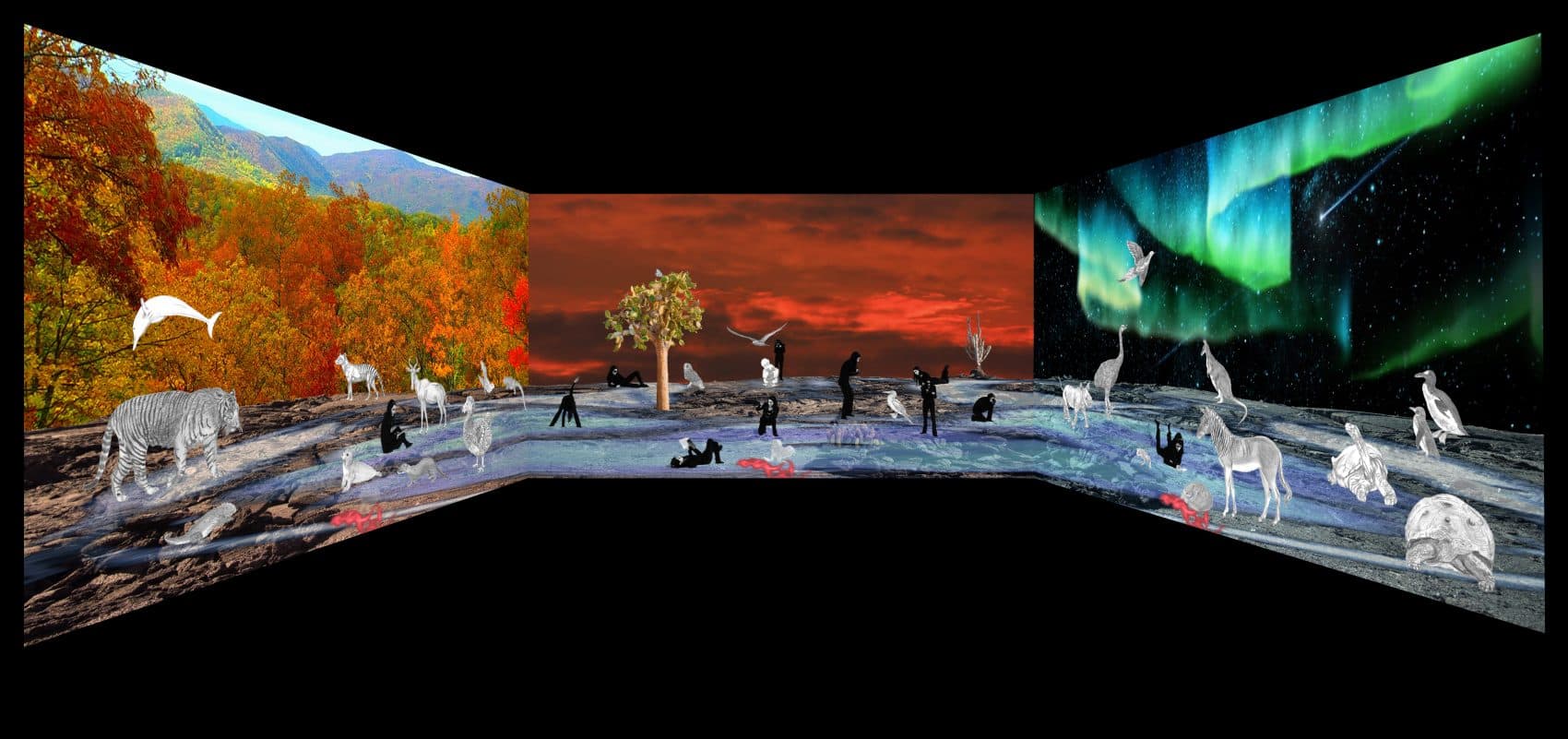
It begins with a view of the planet on three screens. Time passes. As night shifts into day, seasons change. It snows. It rains. A land iguana appears, then a marine iguana, then a tortoise.
Eventually a woman materializes. She reads a book, takes photographs, does yoga. More animals appear, but these are only pencil sketches. As time passes, even the animal sketches fade. At last, the woman herself melts away. At the very end, a huge supernova overtakes the screen, surrounding the viewer in a ball of fire before all three screens turn finally, inexorably, to white.

Certainly, it is not the most hopeful view of where the planet is headed.
But sadly, “Wish You Were Here: Greetings from the Galápagos” is neither overwrought nor exaggerated. The video is simply a profound sense of grief deeply felt by Boston artist Allison Maria Rodriguez after a trip to the Ecuadorian islands.
“I very viscerally felt the notion that this place could disappear at any moment and these animals would no longer exist,” says Rodriguez, of her time spent there in 2016. “I do feel that absence, that loss, in my chest as a really tight feeling. And the work comes from that.”
“Wish You Were Here” is just one video making up a four-piece exhibit called “Quickening the Dust: Rekindling our Living Link,” now on view at the Dorchester Art Project (otherwise known as DAP) through Feb. 23. The video, which fills one entire room, won the 2017 Creative Climate Awards grand prize awarded by the Human Impacts Institute. (If you miss the current exhibit, it will spend July and August at the Boston Children’s Museum, where it will be shown in conjunction with educational programming.)
Rodriguez is currently an artist-in-residence at DAP where she has used the Dot Avenue art space to create her fantastical works that make use of drawing, collage, photography and animation. Her work has a feeling of magical realism about it. Natural landscapes combine with surreal and dream-like passages, immediately recalling something that you may have glimpsed on the cover of an Isabel Allende novel. Although the overall theme of the show is ecological and cultural loss, these works hold a wistful faded delicacy that while at times sad, is also unapologetically beautiful.
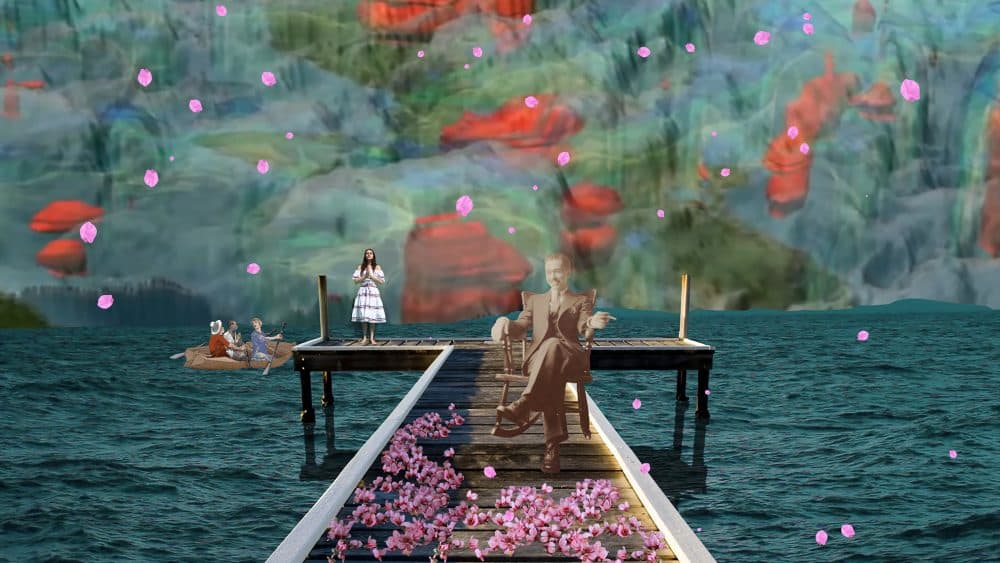
"In the Presence of Absence" is a video installation taking up more than half of a second room at DAP. It ties Rodriguez’s longing for her lost Cuban heritage to similar feelings for a changing planet. Interweaving photographs of Cuban relatives who have passed with photographs of extinct animal species, Rodriguez says she was naturally drawn to this juxtaposition because both types of photographs evoke the same feelings for her. Those photos are offset by satellite images of hurricanes that have swept through Cuba.
A third video, “One Girl’s Fantasy,” explores the way in which women have used fantasy as a way of escaping trauma. A static installation, “Why Don’t the Frogs Sing Anymore?” presents a series of jars filled with slips of paper bearing the names of extinct frog species. It was inspired by Elizabeth Kolbert’s description of the rapid disappearance of the Panamanian golden frog, once a common sight and a symbol of good luck, in her book "The Sixth Extinction." Rodriguez invites viewers to Google each frog to become better acquainted, now that they’re gone forever.
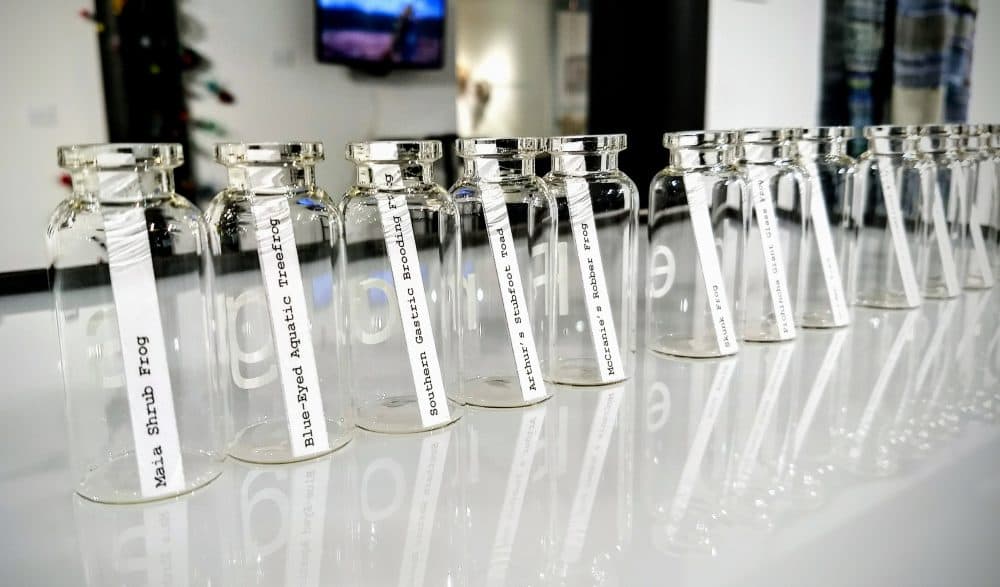
If some of this sounds familiar, there’s a reason. Chances are you’ve seen one of Rodriguez’s pieces somewhere around town. One of her recent projects was a large-scale public art video installation commissioned by Boston Cyberarts and the Massachusetts Convention Center Authority, where "One Girl’s Fantasy" was displayed at billboard dimensions right outside the Convention Center in Boston's Seaport.
Like "One Girl’s Fantasy," the Galápagos piece also relates to trauma. But in this case, Rodriguez was thinking about the Earth as a brain and climate change as a form of trauma.
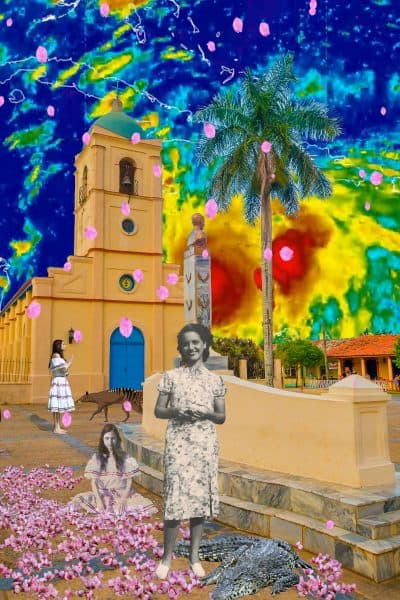
“Species extinction is an effect of trauma, like post-traumatic stress disorder,” she says. “You’ll see a synaptic flash at one side of the screen and then a drawing of an extinct species will appear on the other side in this fantastical landscape. It’s about the idea of there being an interconnection. If one thing disappears on one part of the planet, then it affects something on the other side.”
From the time she was a child growing up in Florida, Rodriguez says she’s had an interest in the natural environment. Back then, her love of animals had her set on becoming a marine biologist. Instead, she ended up pursuing a degree in literature as an undergraduate before turning to art. In 2010, she received a MFA from the School of the Museum of Fine Arts at Tufts. After grad school, her art took her in many different directions but in the last couple of years she has found herself focused on environmental issues.
It is a focus, she says, that an increasing number of artists are taking, seeing the powerful effects of climate change. Highlighting this growth in artist activism, Rodriguez organized an artist panel (on Thursday, Feb. 15) with artists who use art — either sculpture, video or performance — to look at environmental issues. This summer, she will journey to the arctic on a fellowship awarded by the Earthwatch Institute. In July, she will be an artist-in-residence at the Churchill Northern Studies Centre in Manitoba, Canada working on its “Climate Change at the Arctic’s Edge” project. An exhibit around her work will be held in the Boston area sometime in 2019.
“I think with the way that politics is going, it’s made my work a lot more relevant,” muses Rodriguez. “I just have the sense of so many different things disappearing. People can see it now, if they are paying attention, in a way that they couldn’t 10 years ago, or even five years ago. It’s getting faster and faster."
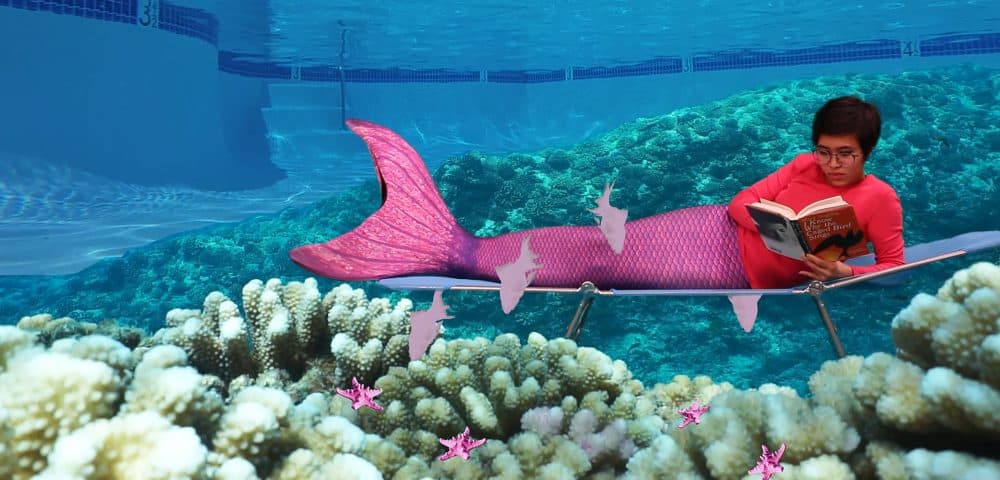
Gallery director Anya Smolnikova says she thought Rodriguez would be the perfect artist to inaugurate DAP’s residency program, as the scale of her work and the galleries it is shown in function almost as “a chapel to the apocalypse.”
“She puts these images together speaking to these huge darknesses out in public now,” says Smolnikova, who first met Rodriguez while they were both doing the Assets for Artists program at MASS MoCA. “Environmental apocalypse, political turmoil, the situation on the planet, she is speaking to these things directly, but she arranges these images so poetically that there’s incredible beauty.”
There’s even hope, says Smolnikova, but it’s a mystical sort of hope — "not a Hollywood ending kind of hope."
"Somehow it’s really not depressing," says Smolnikova. "There’s a sense of awe. It really is beautiful — her craft and her visual sense and the way she uses the video medium. It’s not a message of good news nor is it a message of bad news. What I’m getting is ‘Pay attention, life is beautiful and all these things are happening.' "
“Quickening the Dust: Rekindling our Living Link,” is at the Dorchester Art Project through Feb. 23. On Thursday, Feb. 15, DAP will hold a panel with local artists whose work focuses on environmental issues from 6 - 8:30 p.m. The discussion is open to the public. Participating artists include Lani Asuncion, Resa Blatman, Gretjen Helene, Andi Sutton and Faith Johnson.
